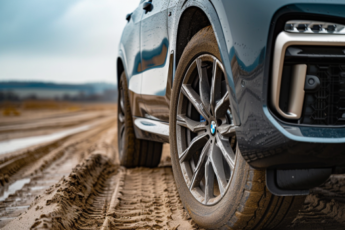Last Updated on 10 hours
Selecting the Right Winter Tires for Superior Traction
Winter chills and icy roads are no match for the best winter tires to keep you safe and in control. As the temperature drops, drivers must navigate through treacherous conditions, making the need for reliable winter tires and dependable snow tires essential. Trusted providers like Tire Easy stress the importance of investing in winter tires, especially in light of the Farmer’s Almanac predictions for heavy snowfall across the Great Lakes, Ohio Valley, and Midwest U.S.
Key Takeaways
- Winter tires provide enhanced safety and control on icy roads.
- Specialized rubber compounds and tread designs offer superior grip and traction.
- Heavy snowfall predictions increase the importance of investing in winter tires.
- Best winter tire brands offer a range of options for various vehicle types.
- Consumer reviews and real-world experiences can help you choose the right winter tire.
- Maintaining winter tires will ensure long-lasting performance across multiple seasons.
- Studded winter tires can further improve safety in extreme icy conditions.
Embracing the Winter Chill: The Importance of Snow Tires
As the winter chill descends and temperatures plunge, the importance of snow tires for driving safety cannot be overstated. With winter storms and cold climates presenting a formidable challenge to drivers, snow tires ensure your vehicle maintains its grip, braking, and handling capacities on icy and snow-covered roads.
Explicitly designed with winter conditions in mind, snow tires are constructed with unique rubber compounds, enabling them to remain flexible and maintain traction in freezing temperatures. This flexibility allows for enhanced responsiveness and improved braking performance, reducing the risks associated with driving amid winter storms and the harshest of cold climates.
“Driving in winter conditions without adequate snow tires is like trying to ice skate in sneakers – it’s not only difficult, but it can be extremely dangerous.” – Farmer’s Almanac
Moreover, regions that do not typically experience severe winters can also be at a heightened risk of accidents, as drivers may be unprepared for the impact of below-normal temperatures and above-average precipitation. In such regions, the Farmer’s Almanac has emphasized equipping your vehicle with snow tires as a fundamental safety measure.
- Enhanced traction on icy and snow-covered roads
- Improved braking performance in cold temperatures
- Responsive handling and vehicle control during winter storms
- Unparalleled safety in even the most out-of-climates
In conclusion, investing in reliable snow tires for your vehicle is a necessary precaution that should not be overlooked. By embracing the winter chill and acknowledging the invaluable role of snow tires in maintaining driving safety, you can face the season with confidence and security.
The Science of Winter Tires: How Do They Provide Superior Traction?
With the help of expert insights from Winter TPMS specialists, this section delves into the technological underpinnings of winter tires, explaining their exceptional cold-weather performance.
Understanding the Rubber Compounds Used in Winter Tires
Winter tires are designed with a high content of natural rubber and advanced rubber compounds to ensure elasticity and grip in freezing temperatures, a stark contrast to the hardening effects of summer and all-season tires. These specialized rubber compounds maintain their flexibility well below 45°F, enabling winter tires to provide superior traction and responsiveness on icy roads instead of stiffening all-season tires.
Examining Tread Patterns and Their Role in Winter Safety
The design of tread patterns in winter tires plays a vital role in overall winter driving safety. Open tread patterns and deep grooves are crucial for channeling away snow and slush, preventing buildup, and significantly enhancing snow-on-snow traction. The following table highlights some key differences in tread designs:
| Winter Tires | All-Season Tires |
|---|---|
| Open Tread Patterns | Closed Tread Patterns |
| Deep Grooves | Shallow Grooves |
| Improved Snow-on-Snow Traction | Reduced Snow-on-Snow Traction |
| More Efficient at Channeling Snow and Slush | Less Efficient at Channeling Snow and Slush |
The Impact of Tire Flexibility on Cold-Weather Performance
Tire flexibility remains a focal point, affecting vehicle handling and response in icy conditions. The rubber compounds in winter tires ensure they conform to varied road surfaces, maintaining critical traction in cold-weather situations. As a result, winter tires significantly improve driving safety and provide much-needed stability during winter driving.
“Winter tire technology has come a long way in recent years, providing drivers with improved traction, handling, and safety in cold-weather conditions.” – Winter TPMS Specialist
Armed with the understanding of how winter tire science keeps drivers safe, it’s clear that investing in a quality set of winter tires is an essential decision for those driving in colder climates. Combining specialized rubber compounds, unique tread patterns, and enhanced tire flexibility gives drivers the confidence to tackle winter roads.
Top Rated Winter Tires for Ultimate Road Grip
Selecting the right winter tires ensures safety and performance during winter’s grasp. Not all winter tires are created equal; certain brands and models stand out for their exceptional traction, durability, and road grip in freezing conditions. Top-rated winter tires promise to deliver ultimate road grip and confidence during cold-weather adventures.
- Bridgestone Blizzak WS90
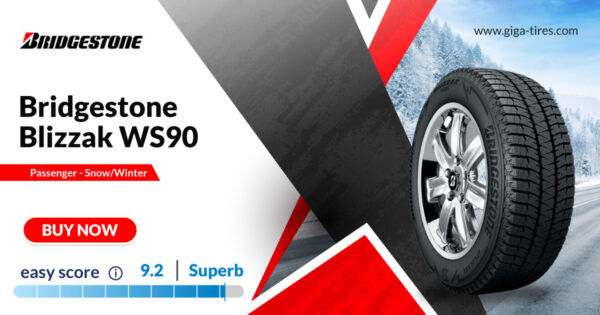
- Pirelli Winter Sottozero 3
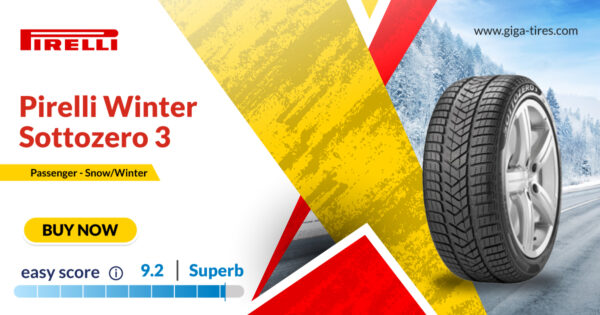
- Cooper Discoverer True North
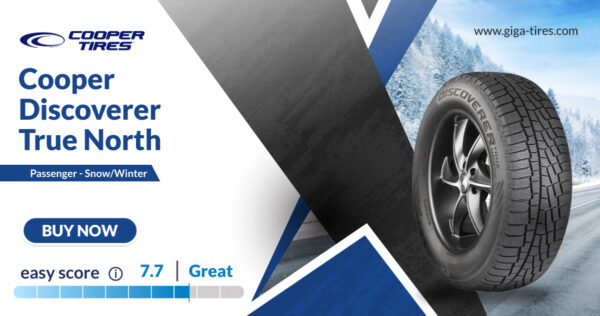
- Continental VikingContact 7
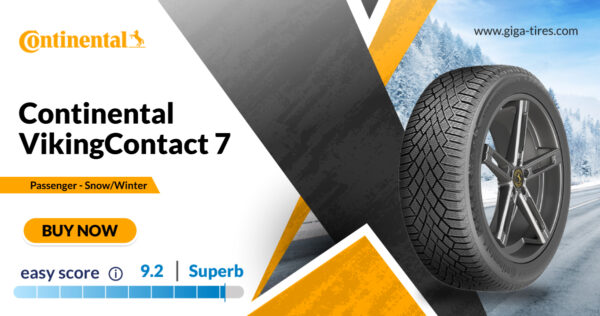
- Goodyear Ultra Grip Ice WRT
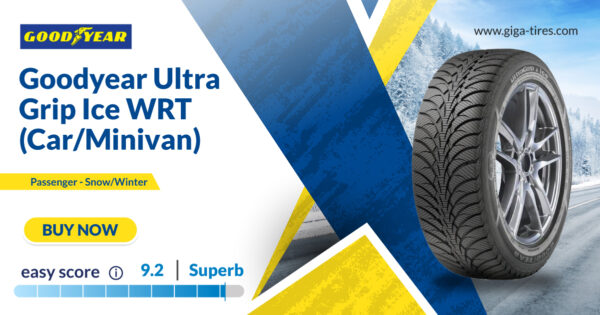
Bridgestone Blizzak WS90 is a popular driver choice for its impressive traction on ice and snow. Its multi-cell rubber compound remains pliable in low temperatures, ensuring consistent grip and quick acceleration.
For high-performance vehicles, drivers trust the Pirelli Winter Sottozero 3 tire. It features a unique tread pattern for maximizing cornering abilities and braking response on slippery winter roads.
The Cooper Discoverer True North tire is known for its exceptional snow and ice traction and provides a well-balanced performance during winter conditions. Its studdable design ensures a secure grip on slippery and icy surfaces for those who require added control.
The Continental VikingContact 7 tire is lauded for its consistent grip in cold temperatures and advanced tread pattern. It is engineered to channel away water and slush, ensuring a responsive and safe driving experience.
Goodyear Ultra Grip Ice WRT is a reliable winter tire option with exceptional ice traction thanks to its advanced rubber compound and unique tread design. It’s a perfect choice for those who regularly drive in snowy and icy winter conditions.
| Winter Tires | Key Features |
|---|---|
| Bridgestone Blizzak WS90 | Exceptional ice and snow traction-multi-cell rubber compound |
| Michelin X-Ice Xi3 | Wet and dry grip, innovative tread pattern, even wear and durability |
| Pirelli Winter Sottozero 3 | Designed for high-performance vehicles, superior cornering abilities |
| Cooper Discoverer True North | Well-balanced performance, studdable design |
| Continental VikingContact 7 | Consistent grip in cold temperatures, advanced tread pattern |
| Goodyear Ultra Grip Ice WRT | Exceptional ice traction, unique tread design |
While these top-rated winter tires offer different key features, they all provide ultimate road grip and safety during winter. When choosing the perfect winter tire to confidently conquer snow, ice, and slush during cold-weather adventures, prioritize your needs and requirements.
Winter Tire Reviews: Real-World Experiences and Recommendations

Winter tire reviews based on real-world experiences shed light on snow tires’ performance and long-term durability and reliability. Furthermore, they provide drivers with invaluable recommendations for choosing the right winter tires. This section deep dives into consumer reports, performance comparisons, and the long-term durability of snow tires.
Consumer Reports: What Drivers Are Saying About Their Winter Tires
Consumer reports provide valuable insights into the benefits of winter tires, as experienced by drivers who entrusted their winter driving safety to these specialized tires. Users of popular winter tire brands such as Michelin, Bridgestone, and Continental consistently report improved vehicle handling and overall confidence when facing winter driving challenges.
“The Michelin X-Ice XI3 is a game-changer for my Honda Accord. I no longer struggle for control on slippery roads, and feel confident accelerating and braking in snowy conditions.”
Drivers emphasize the remarkable transformation in their overall winter driving experience when investing in a quality set of winter tires, offering invaluable recommendations for those considering purchase.
Performance Comparisons: Winter Tires vs. All-Season Tires
Comparing the performance of winter and all-season tires on snowy, icy, or slippery roads is essential in understanding the clear advantage that winter tires offer when driving in winter conditions. Some notable performance comparisons include:
- Braking distance: Winter tires provide shorter braking distances on icy and snowy surfaces, preventing accidents during sudden stops.
- Skid resistance: Traction is significantly better on winter tires, helping to avoid skidding and losing control in adverse weather conditions.
- Handling and steering: Winter tire compounds and tread patterns ensure responsive handling and precise steering on slippery surfaces.
These performance comparisons highlight the importance of winter tires when navigating winter roads. They give drivers more control and confidence in harsh weather conditions.
Analyzing Long-Term Durability and Reliability in Snow Tires
Evaluating the durability and reliability of snow tires is critical in determining their long-term effectiveness in winter conditions. Factors influencing durability and reliability include:
-
- Treadwear: Tread depth is crucial for maintaining traction and grip on winter roads. Winter tires with longer-lasting tread wear will optimize performance throughout several seasons.
Table: Tread Wear Comparison for Selected Winter Tires
| Tire Model | Expected Tread Life (miles) |
|---|---|
| Michelin X-Ice XI3 | 40,000 |
| Bridgestone Blizzak WS90 | 45,000 |
| Continental WinterContact SI | 35,000 |
- Compound aging: The rubber compounds in winter tires must maintain flexibility in various temperatures. Tires that resist aging from cold-induced hardening will perform reliably for multiple seasons.
- Resistance to road hazards: Potholes, road debris, and other risks can compromise tire integrity. Snow tires that withstand these everyday road challenges are more likely to offer long-term durability.
Analyzing snow tires’ long-term durability and reliability empowers drivers to choose tires that provide a safe and reliable winter driving experience season after season.
The Winter Tire Buying Guide: Factors to Consider
Selecting the right winter tires for your vehicle can be a daunting task. With so many options available, it is essential to consider factors such as tire size, tread depth, and budget to make an informed decision. This comprehensive winter tire buying guide will walk you through key factors when selecting the perfect snow tires for your vehicle.
Your snow tire selection should begin with determining the type of tire best suited for your driving needs. There are two main types of winter tires: studless and studded. Studless tires provide excellent traction on snow and ice without the need for metal studs, which can be noisy and cause damage to the road. On the other hand, studded tires have metal studs embedded in the tread to improve grip on extremely icy surfaces, but they are not allowed in some states due to the potential for road damage.
Studless winter tires are a popular choice for most drivers. However, if you frequently drive on extremely icy roads, studded tires may provide the additional traction needed for enhanced safety.
Finding the Right Tire Size
It is crucial to choose the correct tire size for your vehicle. The size can be found on the sidewall of your existing tires or in your vehicle’s owner’s manual. Do not deviate from the recommended tire size, which can affect your vehicle’s handling, fuel efficiency, and overall safety.
- Check your vehicle’s owner’s manual for the recommended tire size
- Verify the size on the sidewall of your existing tires
- Ensure the new winter tires meet the recommended size specifications
Examining Tread Depth for Deep Snow Conditions
The tread depth is crucial in determining a tire’s ability to perform in deep snow conditions. Winter tires should have a tread depth of at least 6/32 inches or greater for optimal traction and performance. To measure tread depth, you can use a tread depth gauge or the “penny test.”
- Tread depth gauge: Insert the probe into the tire tread and read the measurement on the gauge
- Penny test: Insert a penny into the tread with Lincoln’s head upside down and facing you. If the print covers the top of Lincoln’s head, your tires have adequate depth.
Budget Considerations
Winter tires can be a significant investment, but skimping on quality could compromise your safety. When determining your budget, consider the long-term value of investing in high-quality winter tires that will provide superior performance and last for several seasons.
| Winter Tire Price Range | Quality Level | Performance | Durability |
|---|---|---|---|
| $100 – $150 per tire | Entry-level | Good performance in light to moderate snow conditions | Fair, may need replacement after a few seasons |
| $150 – $250 per tire | Mid-range | Excellent performance across various winter conditions | Good, long-lasting, with proper maintenance |
| $250+ per tire | Premium | Superior performance in severe winter conditions | Excellent, durable for multiple seasons with proper maintenance |
By carefully considering the above factors and making an informed decision, you can secure the optimal winter tire choice, ultimately prioritizing your driving safety during the cold and unpredictable winter months.
Winter Tires versus All-Season Tires: Making the Right Choice

As winter approaches, drivers decide whether to invest in winter tires or continue using their all-season tires. The debate on the adequacy of all-season tires in challenging winter scenarios unfolds, with evidence pointing towards the superiority of winter tires in severe snow and ice. In this section, we will reveal the inherent limitations of all-season tires during harsh winter conditions, underscoring their suboptimal performance compared to winter tires.
The Limitations of All-Season Tires in Severe Snow and Ice
All-season tires are designed to handle various weather conditions, from hot summers to mild winters. Although these tires perform adequately in moderate weather, their performance declines as temperatures drop and snow and ice accumulate on roads.
All-season tires become less effective in cold temperatures due to the hardening of the tire compound, which reduces their traction capabilities. The tread pattern on all-season tires is less aggressive, offering limited grip on snow and ice. Moreover, all-season tires lack advanced rubber compounds, flexible construction, and specialized tread patterns that distinguish winter tires and optimize their performance in severe weather conditions.
Winter tires outperform all-season tires in severe snow and ice, thanks to their specialized rubber compounds, tread patterns, and construction designed specifically for winter driving safety.
| Factors | Winter Tires | All-Season Tires |
|---|---|---|
| Compound | Flexible in cold temperatures, maintaining grip on snow and ice. | Hardens in cold temperatures, decreasing traction capabilities in severe weather conditions. |
| Tread Pattern | Aggressive tread design optimized to channel snow, slush, and ice, enhancing grip and traction. | Less aggressive tread pattern, less effective in accumulating snow and ice. |
| Performance in Severe Snow and Ice | Superior traction, braking, and handling in severe winter conditions. | Limited grip and handling capabilities in severe winter increase the risk of accidents. |
Considering the limitations of all-season tires, drivers must make an informed decision regarding their tire choice. Investing in winter tires is prudent for those in regions prone to severe winter weather conditions, as they significantly improve winter driving safety and performance.
Studded Winter Tires: When to Choose Them for Enhanced Safety
For drivers seeking the ultimate level of winter tire safety, studded winter tires offer enhanced protection and performance compared to their studless counterparts. As the name suggests, these tires feature metal studs embedded in the tread, which provide extra grip and stability on icy and snow-covered surfaces. In this section, we’ll explore the unique advantages of studded winter tires and investigate when they are the best choice for navigating extreme winter conditions.
Many drivers opt for studded winter tires when regularly driving in areas with harsh winter conditions, such as heavy snowfall or frequent freezing rain. The metal studs bite into the ice, dramatically increasing traction and minimizing the risk of losing control on slippery surfaces. This enhanced grip allows for safer handling and more predictable vehicle response.
“The decision to use studded winter tires should be based on the severity of the winter conditions you expect to encounter. If you live in a region where icy roads and heavy snowfall are common, studded winter tires may provide the additional safety and stability needed to navigate these challenging conditions safely.”
| Pros of Studded Winter Tires | Cons of Studded Winter Tires |
|---|---|
| Superior grip and stability on icy roads | Noisier than studless tires |
| Improved braking on snowy and icy surfaces | It may wear down more quickly on dry pavement |
| Additional safety and control in extreme winter conditions | Restricted use in some areas due to potential road damage |
It is essential to consider your specific winter driving needs when deciding whether to invest in studded winter tires. They are an excellent choice for maximum safety and performance in icy conditions. However, they may not be ideal for drivers who primarily travel on clear or rain-soaked roads, as the studs can be noisy and wear down more quickly on dry pavement.
Additionally, check the rules and regulations in your area regarding using studded winter tires. Some regions restrict or prohibit their use due to potential road damage caused by the metal studs. Always comply with local regulations to ensure your vehicle’s safety and legal compliance.
- Research your region’s winter road conditions to determine if studded winter tires are necessary for enhanced safety.
- Consider the pros and cons of studded winter tires, including traction benefits, noise levels, and potential wear on dry roads.
- Check local regulations to determine if studded winter tires are permitted or restricted in your area.
In conclusion, studded winter tires provide enhanced safety and performance in icy conditions, making them a valuable investment for drivers frequently facing extreme winter challenges. Before deciding, carefully weigh the advantages and disadvantages of choosing the right winter tire solution for your needs.
The Best Winter Tire Brands: A Comprehensive Look
Finding the best winter tire brands can be challenging, but selecting a reliable and trusted brand is crucial to ensuring safety and optimal performance during harsh winter conditions. Here, we comprehensively review the top winter tire brands that consistently deliver excellence in performance and user trust.
- Michelin
- Bridgestone
- Continental
- Goodyear
- Pirelli
- Yokohama
- Hankook
- Cooper
- Toyo
- BFGoodrich
“Winter tires from well-established brands often have better cold-weather performance and more advanced features to navigate slippery roads with confidence.”
The following table compares these brands’ top-performing winter tire models according to customer satisfaction, performance test results, and recommended use to assess these brands’ best winter tire offerings.
| Brand | Top Winter Tire Model | Customer Satisfaction | Performance Test Results | Recommended Use |
|---|---|---|---|---|
| Michelin | X-Ice Xi3 | High | Excellent | All winter conditions, including ice and deep snow |
| Bridgestone | Blizzak WS90 | High | Excellent | Slush, ice, and light to moderate snow |
| Continental | VikingContact 7 | Good | Excellent | All winter conditions, especially ice and packed snow |
| Goodyear | Ultra Grip Winter | Good | Good | Light snow and slush |
| Pirelli | Winter Sottozero 3 | Good | Very Good | Cold, dry pavement and light snow |
| Yokohama | ice guard iG53 | Good | Very Good | Cold, wet pavement and moderate snow |
| Hankook | Winter i*Pike RS W419 | Good | Very Good | All winter conditions, including ice and heavy snow |
| Cooper | Discoverer True North | High | Excellent | All winter conditions, especially ice and wet snow |
| Toyo | Observe G3-Ice | Good | Good | Variable winter conditions, from cold and dry to slushy and snow-covered pavement |
| BFGoodrich | Winter T/A KSI | Good | Very Good | Ice and light snow conditions |
When selecting the best winter tire brands, consider your driving habits, the severity of winter conditions in your region, and your budget. By conducting a comprehensive tire review and choosing a well-established and trusted brand for its winter tires, you can ensure your safety and maximize performance when driving on snow and ice.
Maintaining Your Winter Tires for Long-Lasting Performance
Proper tire maintenance ensures your winter tires’ long-lasting performance and effectiveness across successive seasons. Keeping your winter tires in top condition involves regular inspections, timely rotations, and appropriate storage practices. By adhering to these tire care tips, drivers can confidently tackle harsh winter conditions while maximizing the lifespan of their winter tires.
Regular Inspections and Tire Condition Monitoring
One essential aspect of tire care is conducting routine inspections for any signs of damage or wear. Look for punctures, cuts, sidewall bulges, and uneven tread wear. Moreover, examining and maintaining the correct tire pressure is crucial for optimum performance and safety. Invest in a reliable tire pressure gauge and ensure you adhere to the manufacturer’s recommended pressure levels.
Timely Tire Rotations
Rotating winter tires is vital to maintenance, ensuring even wear and improving overall tire life. Most manufacturers recommend rotating winter tires every 6,000 to 8,000 miles, although consulting your vehicle’s specific guidelines is always advised for accurate information. Tire rotations can be performed at home or by a skilled professional, depending on your familiarity with the process.
Proper Storage when Not in Use
Storing your winter tires correctly is paramount when winter comes to a close. Proper storage protects your tires from damage and premature aging, ensuring their readiness for the following winter season.
- Clean the tires: Before storage, wash the tires with soap and water, removing dirt and debris.
- Find a cool and dry location: Store your tires in a cool, dry, and dark environment, away from direct sunlight and ozone-generating sources, such as electric motors.
- Stacking or hanging: Tires can be arranged on their sides and stacked or hung on a tire rack if available.
| Storage Option | Storage Method | Notes |
|---|---|---|
| Stacking | Position tires on their sides and stack one on top of the other. | Limit stacking height to avoid damaging the tire sidewalls. |
| Tire rack | Hang the tires on a dedicated tire storage rack. | Ensure the rack is sturdy and in good condition to avoid tire damage. |
“Proper maintenance doesn’t just extend the life of your winter tires; it also optimizes their performance and ensures consistent safety on the road.”
In conclusion, tire care is crucial for maintaining winter tires and promoting long-lasting performance. By incorporating routine inspections, timely rotations, and appropriate storage practices, motorists can safely and confidently navigate icy and snowy roadways season after season.
Preparing for Unexpected Winter Roads: Why Snow Tires Are Essential
As winter approaches, driving conditions can become increasingly unpredictable. When sudden snowstorms or icy roads put your safety at risk, equipping your vehicle with snow tires is an essential step in winter road preparation. In this section, we will explore real-life case studies demonstrating the life-saving potential of snow tires during winter emergencies and examine how they can help you confidently navigate snow-covered highways.
Case Studies: Snow Tires as Lifesavers during Winter Emergencies
Several documented cases provide clear evidence of the importance of snow tires in maintaining control and safety during winter driving conditions. In one example, a family from Minnesota found themselves stranded on a remote highway during a severe blizzard. Unable to call for help, they had no choice but to wait out the storm. Their vehicle, equipped with snow tires, remained safely planted on the icy road, allowing them to survive the ordeal.
“We thought we might not make it through the night, but thanks to our snow tires, our car remained secure on the slippery highway throughout the storm. They were true lifesavers.”
Another case study showcases how a driver in Colorado avoided a fatal collision when his snow tires saved him from sliding off an icy mountain curve. The driver credits the snow tires for allowing him to maintain control and avoid plummeting off the edge.
“My snow tires absolutely saved my life that day. I don’t even want to imagine what would have happened if I was on all-season tires.”
Navigating Snow-Covered Highways with Confidence
The importance of snow tires for winter road safety extends to life-threatening situations and everyday driving in cold weather regions. To better understand the driving confidence snow tires can provide, consider the following:
- Improved traction: Snow tires’ specialized tread patterns and rubber compounds maximize grip on snow and ice, reducing the chance of losing control while navigating snow-covered roads.
- Enhanced braking: Snow tires’ better grip and traction allow drivers to brake more effectively and efficiently, preventing collisions caused by skidding on icy roads.
- Greater control: Snow tires’ flexibility ensures superior handling and responsiveness on winter roads, giving drivers more control over vehicle maneuvering during challenging conditions.
Investing in snow tires is prudent for those who need to navigate icy highways during winter. Don’t leave your safety to chance—make sure your vehicle is prepared for the unexpected winter roads by equipping it with high-quality snow tires.
Conclusion
As we conclude this comprehensive guide on winter tires, it becomes evident that investing in the right set of snow tires can significantly impact your winter driving safety. With their specialized rubber compounds, tread patterns, and technological innovations, winter tires offer unparalleled road grip and control under challenging conditions, which all-season tires often fail to deliver.
The benefits of snow tires cannot be stressed enough, as they have been shown to save lives in emergencies and allow drivers to navigate snow-covered highways confidently. Top-rated winter tires can make a difference behind the wheel in frosty weather conditions by prioritizing safety, performance, and long-lasting durability.
Equipping your vehicle with winter tires is crucial to maximize driving safety during the cold months. Do not underestimate the importance of snow tires in bolstering your vehicle’s performance and responsiveness when temperatures dip and the roads freeze over.
Stay safe, make the right choice, and let your winter tires help you master the unpredictable winter roads with ease.
FAQ
What are the main benefits of using winter tires?
Winter tires are designed for cold, snowy, and icy road conditions. They provide better traction, improved braking, and responsive handling compared to all-season tires, leading to a safer and more confident driving experience during winter months.
How do rubber compounds and tread patterns in winter tires improve performance?
Winter tires are made of specialized rubber compounds that stay flexible even in cold temperatures, ensuring better contact and grip with the road surface. Tread patterns help channel away snow and slush, preventing buildup and enhancing snow-on-snow traction for improved safety on winter roads.
What should I consider when buying winter tires?
Factors to consider when buying winter tires include tire types suitable for studless or studded applications, appropriate tire size, tread depth, budget, and recommendations from trusted winter tire brands. Making the right choice ensures improved driving safety in snowy and icy conditions.
Are all-season tires sufficient for winter driving?
All-season tires can perform well in mild winter conditions, but they have limitations when it comes to severe snow and ice. Winter tires offer superior performance and safety in harsh weather conditions due to their specialized rubber compounds, tread patterns, and other features specifically designed for cold temperatures.
Should I consider studded winter tires for my vehicle?
Studded winter tires can offer enhanced safety in extreme icy conditions by providing additional grip and stability on slippery surfaces. If you frequently drive on icy roads or live in a region with harsh winter conditions, you may benefit from studded winter tires for added safety and peace of mind.
How can I maintain my winter tires for long-lasting performance?
Proper maintenance of winter tires includes regular tire pressure checks, balancing, alignment, rotation, and inspections for damage or excessive wear. Additionally, store them in a cool and dry place when not in use. These steps help ensure optimum performance and longevity across successive winter seasons.






